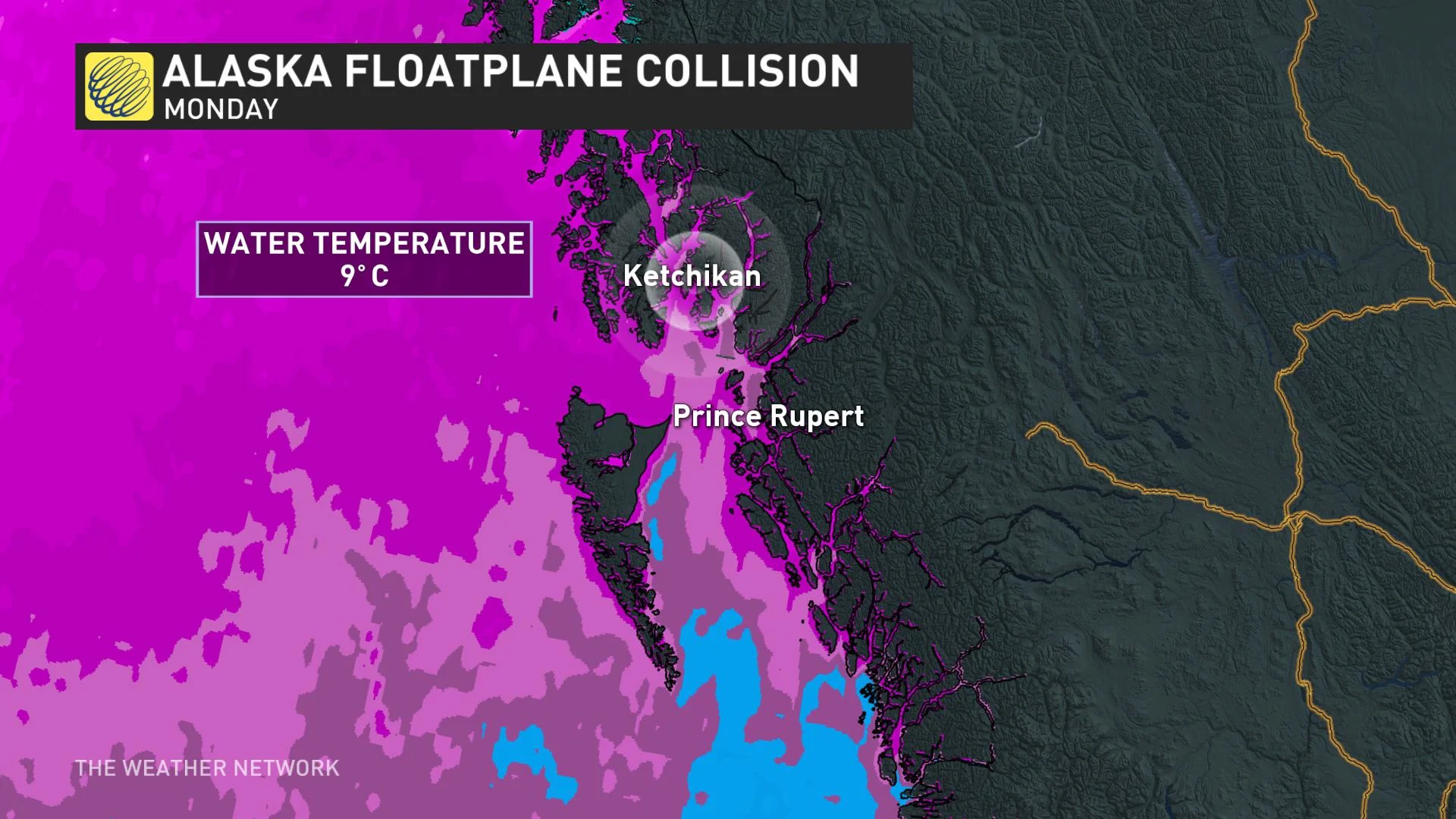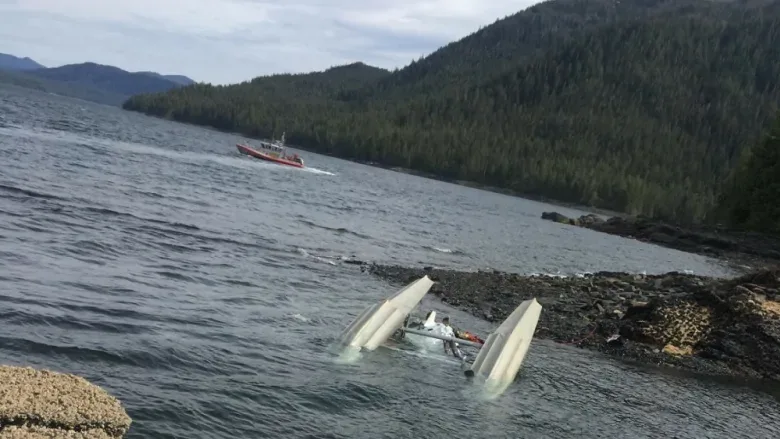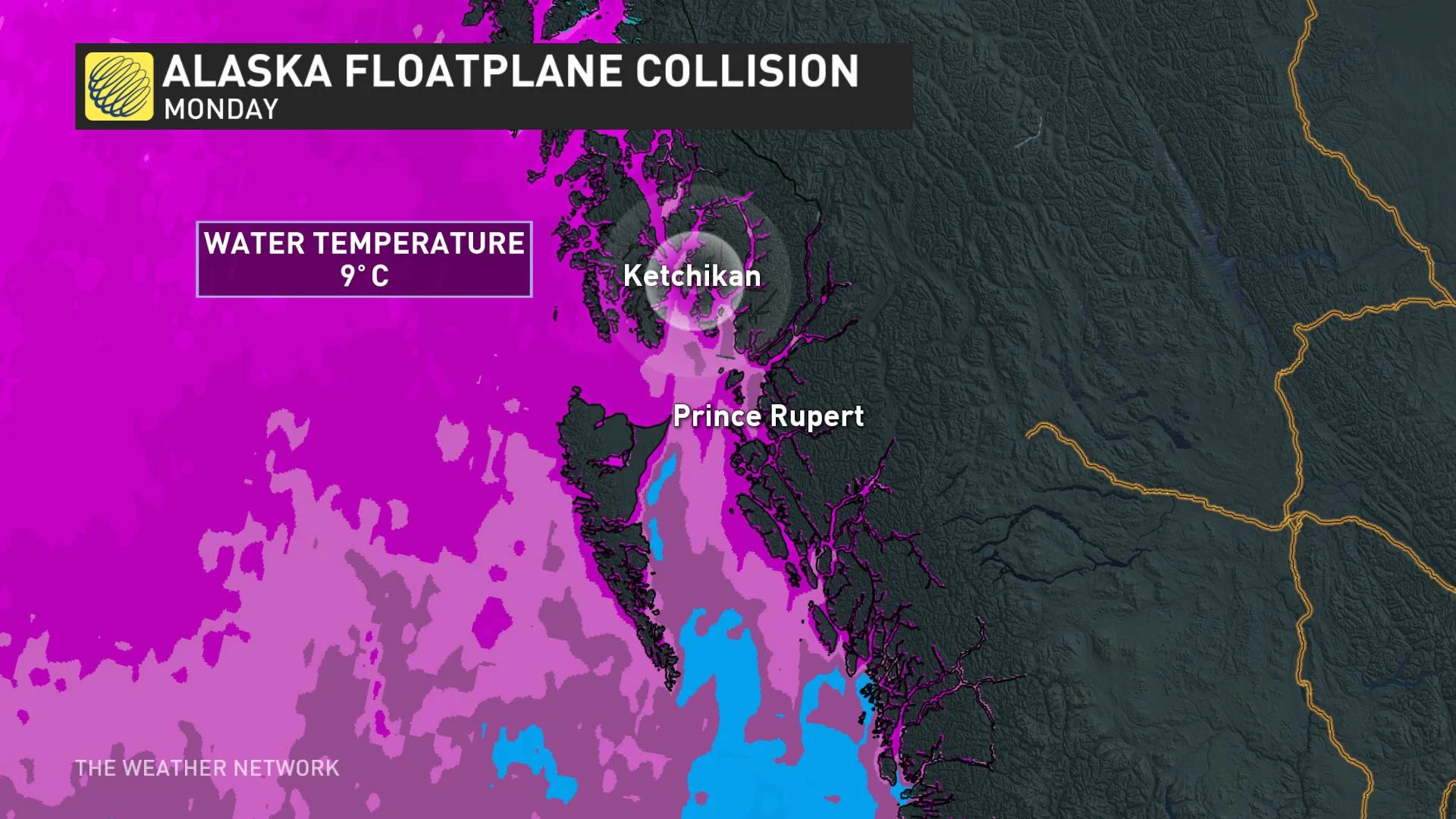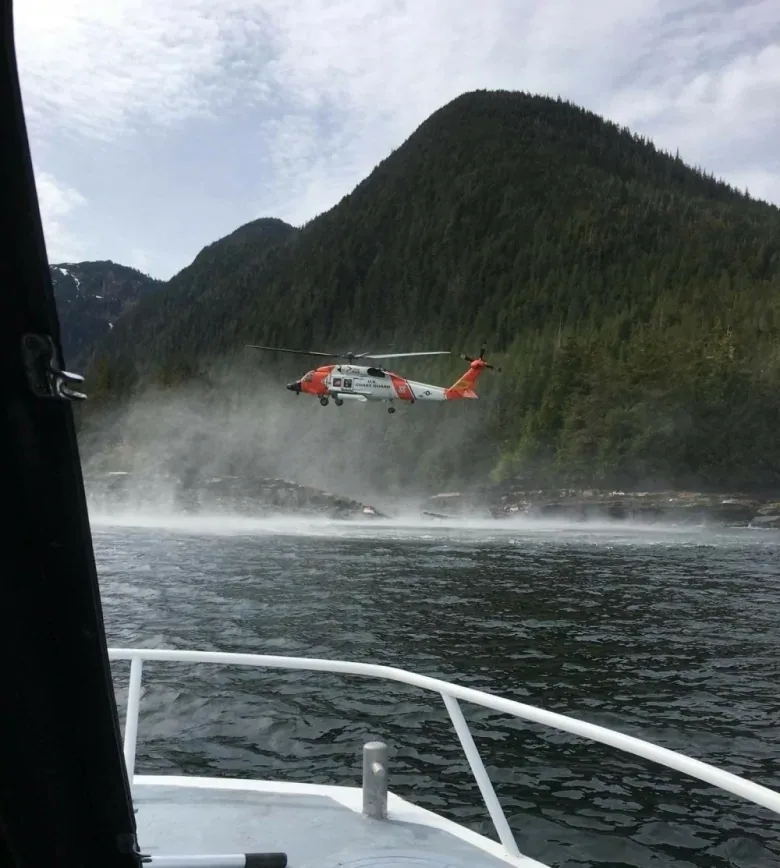
B.C. woman dead in Alaska float plane crash, frigid waters
Officials confirmed the last two missing victims of Alaska's fatal air crash were found dead late on Tuesday evening after a hunt through frigid waters and debris.
One Canadian, who has been identified by Alaska State Troopers as 37-year-old Elsa Wilk, was among the six that died when the two sightseeing planes crashed in midair and in broad daylight near Ketchikan on Monday afternoon. Police say Wilk was from Richmond, British Columbia and her next of kin has been notified.
"Our thoughts and sympathies are with the family and loved ones of the Canadian citizen who died in Alaska," Guillaume Bérubé, a spokesperson for Global Affairs Canada, said in a statement earlier Tuesday.

(Coast guard boat searches for survivors in George Inlet near Ketchikan on Monday - U.S. Coast Guard)
According to the U.S. Coast Guard, the two people that were listed as missing were found dead on Tuesday, bringing the death toll to six of the 16 people aboard the two planes. The other 10 passengers were injured in the crash with some reported as suffering from various broken bones.
First responder Jacob Bauer knew one of the pilots, who was killed.
"We were in dry suits so we jumped in the water, searching for anything we can find," Bauer said in a Reuters report. "Didn't know anyone's names except for the pilot. Grew up with him. Old family friend. Really good guy, but yeah, flying was his life, so he went out doing something he loved."

U.S. NATIONAL TRANSPORTATION SAFETY BOARD INVESTIGATES POSSIBLE FACTORS, INCLUDING WEATHER
U.S. federal investigators have begun probing the cause of Monday's deadly crash with early indications showing that both planes carrying cruise ship passengers were heading back to Ketchikan.
“The preliminary data shows speed and altitude, but we don’t want to make any assumptions based on that,” said a National Transportation Safety Board member, Jennifer Homendy at a news conference. “We still have to recover the planes and then we have to look at those, and it takes some significant work to understand how the two came together.”
The passengers had all arrived in the Alaskan city on the Royal Princess cruise ship for a week-long trip between Vancouver, British Columbia and Alaska, Reuters reports.
The NTSB said neither of the planes were required to be fitted with flight data or cockpit voice recorders and the planes were operated by two separate tour companies. The investigation will look into many possible factors for this crash, including pilot training, medical issues, flight plans, aircraft maintenance, flight conditions, and weather.

(U.S. coast guard helicopter crew hovers while searching for survivors of the collision near George Inlet on Monday - U.S. Coast Guard)
The U.S. National Weather Service says the water temperature off Ketchikan was 9°C on Tuesday, but expected survival time when water ranges from 4-10°C is only about one to three hours, according to the United States Search and Rescue Task Force's website.
Divers will start working on Wednesday to pull up the wreckage of the two planes, one which has been listed as a Beaver float plane and the other an Otter float plane.
With files from Retuers, U.S. Coast Guard, CBC.






